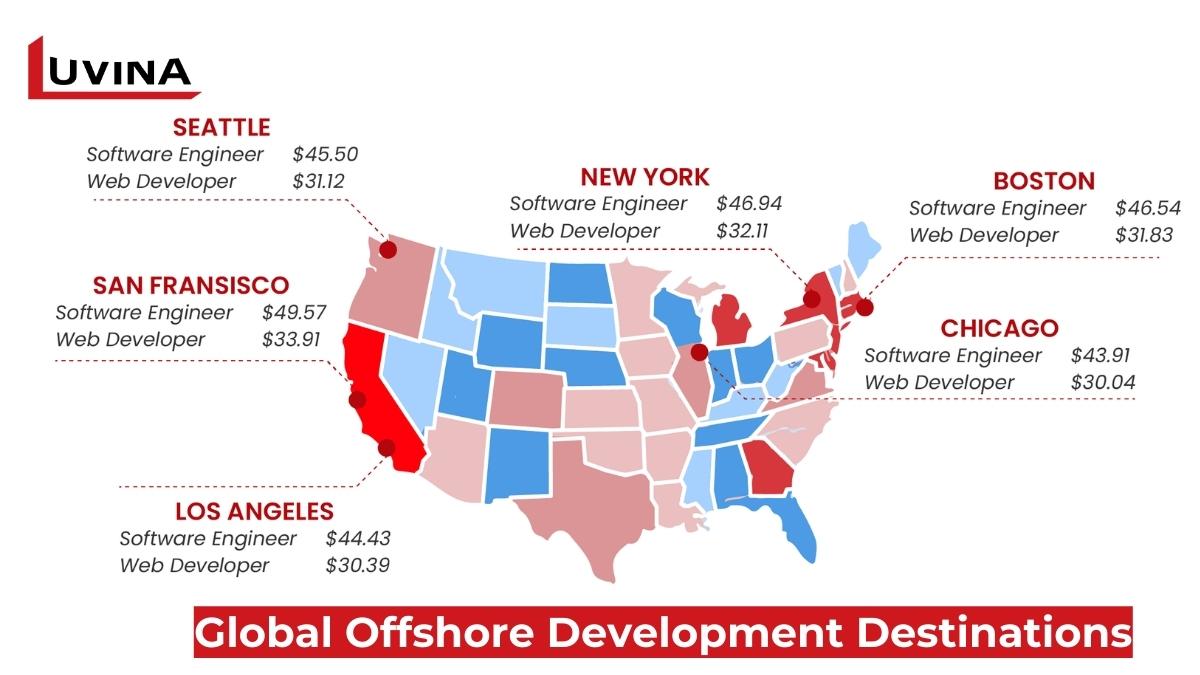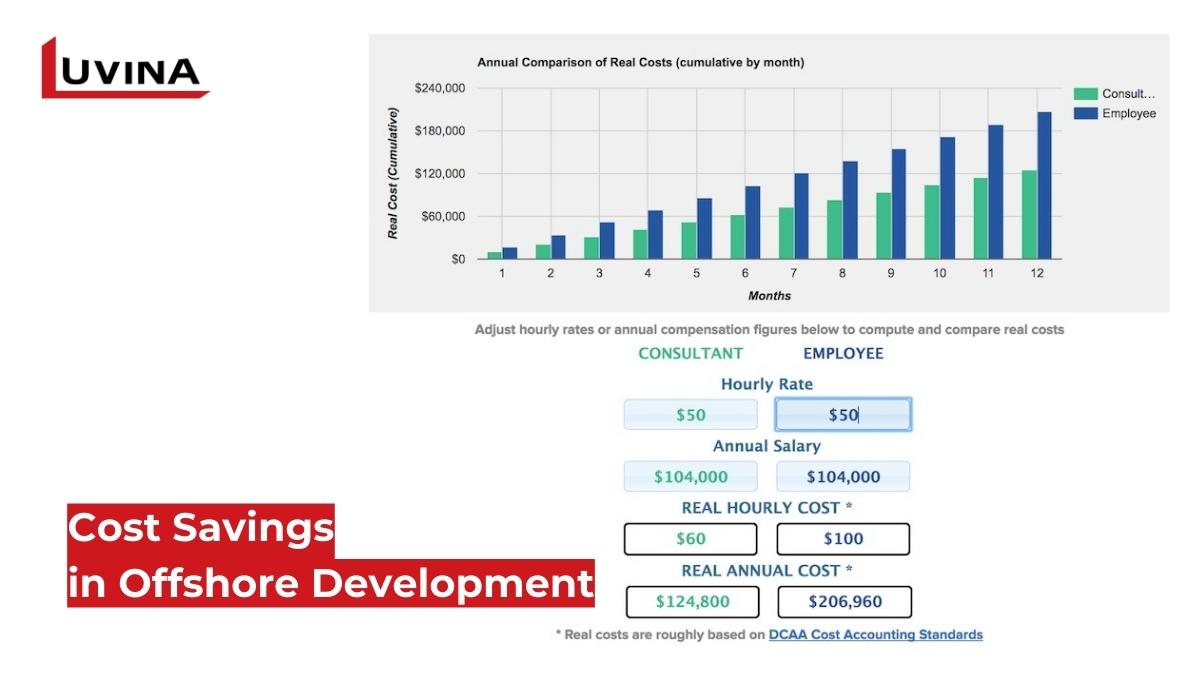In the ever-evolving landscape of the digital age, businesses often seek ways to remain competitive, innovative, and cost-efficient. One strategic approach that has gained immense popularity over the years is offshore software development. By outsourcing software development tasks to offshore destinations, companies can tap into a global talent pool, reduce costs, and accelerate project delivery. However, one of the key factors influencing the decision to go offshore is the cost, specifically offshore software development rates. In this comprehensive guide, we will delve into the intricacies of offshore software development rates by country, offering insights and considerations to help you make informed decisions for your business.

Understanding Offshore Software Development Rates
When we talk about offshore software development rates, we are referring to the cost of hiring software development talent and services in different countries around the world. These rates can vary significantly from one nation to another due to a myriad of factors, including the local cost of living, labor supply and demand, economic conditions, and the level of expertise available.
The decision to go offshore for software development often begins with the desire to reduce costs while maintaining or improving the quality of work. To make an informed choice, it’s crucial to understand the rates offered by different countries and how they correlate with the expertise and quality of services provided.

Factors Influencing Offshore Software Development Rates
Numerous factors impact the rates offered by offshore software development companies. Let’s explore some of the most prominent ones:
- 1. Cost of Living: One of the primary drivers of offshore software development rates is the local cost of living in a given country. Higher living costs generally translate to higher hourly rates for software developers. Conversely, countries with lower living costs tend to offer more competitive rates.
- 2. Supply and Demand: The availability of software development talent in a particular country can significantly affect rates. In countries with a surplus of skilled developers, rates may be more competitive due to increased competition among providers. Conversely, countries with high demand for software development services may charge higher rates.
- 3. Skill and Expertise: The level of skill and expertise within a country’s software development workforce plays a crucial role in determining rates. Countries with highly skilled developers who are proficient in the latest technologies and methodologies often charge higher rates due to the value they bring.
- 4. Economic Conditions: A country’s economic stability and currency exchange rates are essential. Economic fluctuations can lead to rate changes, and exchange rate disparities can affect the overall cost for businesses outsourcing software development.
- 5. Time Zone and Communication: The geographical location and time zone of an offshore partner can also influence rates. Proximity to your business’s time zone can be an advantage, allowing for real-time communication and collaboration, potentially justifying higher rates.
Offshore Software Development Rates by Country
Now, let’s take a closer look at offshore software development rates in some popular offshore destinations center:

India
– Hourly Rate: $20 – $50
– Overview: India has long been a top outsourcing destination known for its cost-effectiveness and vast talent pool. The country offers competitive rates, making it an attractive choice for startups and SMEs.
Ukraine
– Hourly Rate: $25 – $50
– Overview: Ukraine is known for its highly skilled developers and competitive rates. It has a growing tech community and often works within European time zones.
Poland
– Hourly Rate: $35 – $60
– Overview: Poland is recognized for its high-quality software development services. While the rates are slightly higher than in some other countries, the quality and expertise are substantial.
Philippines
– Hourly Rate: $18 – $40
– Overview: The Philippines provides lower rates compared to many other Asian countries. It is known for its proficiency in various software development technologies.
Vietnam
– Hourly Rate: $18 – $40
– Overview: Vietnam offers competitive rates and has gained recognition for its software development expertise. It is becoming increasingly popular among businesses looking for cost-efficient offshore services.
>> See more: Top 7 Software Outsourcing Companies In Vietnam
Mexico
– Hourly Rate: $25 – $50
– Overview: Mexico’s geographical proximity to the United States makes it an attractive choice for companies seeking nearshore outsourcing. Rates are competitive, and there is a strong emphasis on software quality.
Brazil
– Hourly Rate: $30 – $60
– Overview: Brazil’s software development rates are relatively higher compared to some other Latin American countries. However, it provides access to skilled developers with a focus on innovation.
China
– Hourly Rate: $25 – $45
– Overview: China offers various software development services. Rates are competitive, and the country is known for its rapid technological advancements.
Eastern Europe (e.g., Romania)
– Hourly Rate: $25 – $50
– Overview: Eastern European countries have emerged as attractive outsourcing destinations, offering a blend of affordability and high-quality development services.
It’s important to note that the rates provided are approximate ranges and can vary based on the specific location within each country, the type of project, the level of expertise required, and the complexity of the work.
Choosing the Right Offshore Destination
When selecting an offshore destination for your software development needs, it’s essential to consider a few key factors:

1. Project Requirements: Assess the specific requirements of your project, including its complexity, technology stack, and timeline. Some countries may be better suited to certain project types.
2. Budget: Determine your budget constraints and seek a destination that offers a balance between cost-effectiveness and quality.
3. Expertise: Evaluate the expertise and skills available in your chosen destination. A highly skilled workforce can often justify slightly higher rates.
4. Time Zone and Communication: Consider the time zone of the offshore team and assess its compatibility with your business hours for effective communication.
5. Cultural Compatibility: Ensure cultural compatibility and a shared understanding of work ethics and values.
Conclusion
Offshore software development is a valuable strategy for startups and SMEs looking to optimize costs and access a global talent pool. Offshore software development rates by country vary significantly, offering a plethora of choices for businesses. The decision on the offshore destination should align with your project’s requirements, budget, and desired level of expertise. By making an informed choice, you can harness the benefits of offshore software development while optimizing costs and driving innovation in your business.
Looking for a Dedicated Offshore Software Development Company? Contact Luvina now!
Related Posts:









Read More From Us?
Sign up for our newsletter
Read More From Us?
Sign up for our newsletter